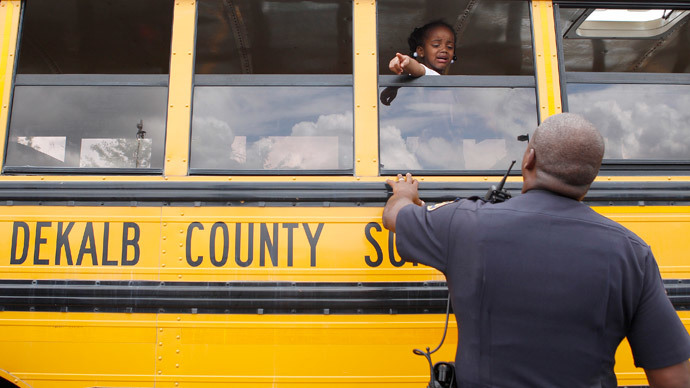Segregation is back in US schools

Sixty years after the Supreme Curt ruled that segregated public schools were unconstitutional, a new university report has found many of the gains of integration have been reversed.
In a report published Thursday by the Civil Rights Project at UCLA, researchers found that while schools aren’t as segregated as they were before the landmark Brown v. Board of Education ruling in 1954, much of the progress that had been made after 1967 has been lost.
According to the Associated Press, just 23 percent of African American students went to schools that were majority white, a number that hasn’t been lower since 1968.
Meanwhile, more African Americans are attending schools in which they are the majority race than has been recorded in the past few decades. Similarly, more than 50 percent of Latino students are going to schools in which they are the majority race.
The statistics are even starker in specific states. In New York, Michigan, Maryland, and Illinois, more than 50 percent of black students attend schools where 90 percent of the institution is minority. The same is true for Latino students in New York, California, and Texas.
Although there are various explanations for this development, the report’s author, Gary Orfield, said one of the primary reasons for it is housing segregation, which can keep minorities from moving into areas with a larger white presence.
"Neighborhood schools, when we go back to them, as we have, produce middle-class schools for whites and Asians and segregated high-poverty schools for blacks and Latinos," he said to the AP.
Another reason, noted by University of Kansas professor John Rury, is that those with the ability to move out of poorer areas to reach better school districts have chosen to do so for many years, leaving behind cash-strapped institutions that sometimes can barely afford to offer basic classes.
For the American Civil Liberties Union’s Dennis Parker, this means fewer opportunities for students to become successful.
"These are the schools that tend to have fewer resources, tend to have teachers with less experience, tend to have people who are teaching outside their area of specialty, and it also denies the opportunities, the contacts and the networking that occur when you're with people from different socio-economic backgrounds,” he told the AP.
The news comes about a month after a separate report was issued by the Annie E. Case Foundation, which found that African Americans, Latinos, and American Indians faced the most barriers to success in the US, significantly more than Asians and white Americans. As RT reported previously, these barriers were found to exist at birth and get tougher over time.
Regionally, the latest UCLA report had some notable findings as well. As noted by the Huffington Post, it found that schools in the Northeast are “more intensely segregated” than they were before 1968. Elsewhere – the Midwest, West, and Border states – schools are much less segregated than in the 1960s, but more segregated when compared to the 1980s and ‘90s.
Schools in the South, meanwhile, were the least segregated in the US.
“Contrary to many claims, the South has not gone back to the level of segregation before Brown. It has lost all of the additional progress made after l967 but is still the least segregated region for black students,” the report stated, according to the Post.
The report states that further research is needed to effectively analyze the problem across the US, and the authors pushed President Obama to take the situation seriously. They said the White House has offered “no major encouragement nor incentives for working on integration.”














